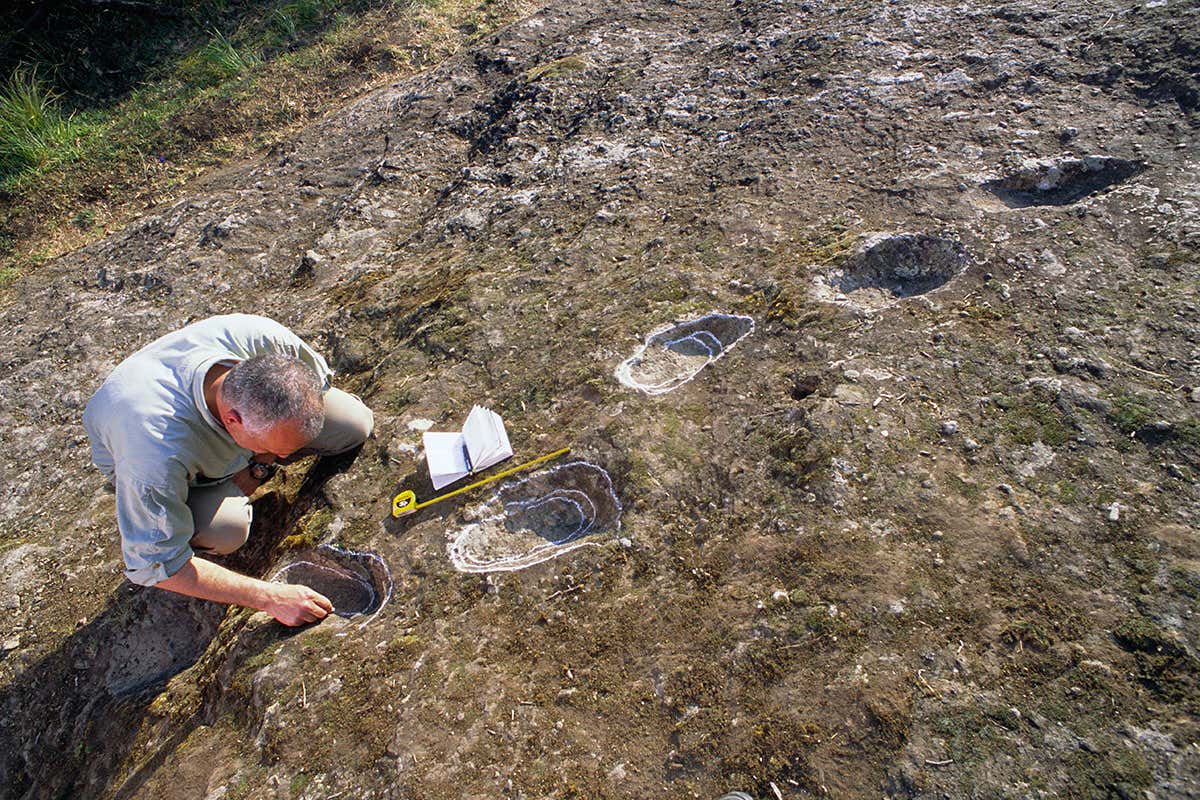On March 13, 2003, ancient human footprints preserved in volcanic ash were discovered by scientists in southern Italy. At 350,000 years old, the footprints are the oldest ever discovered of the Homo genus, or the modern group humans (homo sapiens) belong to. These footprints belonged to three upright walking early humans, most likely the subspecies Homo heidelbergensis which was common throughout Europe during the Paleolithic era or Stone Age.
There are three sets of footprints coming down the flanks of the Italian volcano. One set indicates someone came down in a zig-zag pattern, while another shows someone who walked normally. Occasional handprints were additionally found, indicating the small group used their hands to steady themselves during the steep decline, but otherwise, all three walked upright on two legs just as modern humans do.
Footprints of ancient humans have been discovered in other parts of the world as well. In fact, some of the earliest known hominid footprints are located in Laetoli, Tanzania. Dating back 3.75 million years, these tracks are similarly preserved in volcanic ash and were discovered by archaeologist Mary Leakey in 1976. They similarly illustrate bipedalism (walking on two feet), a uniquely human evolutionary trait. Further research suggests early humans evolved to walk on two feet prior to the development of enlarged brains, which was itself another pivotal evolutionary development.
Much remains to be unearthed and studied regarding human evolution and our ancient ancestors. Nonetheless, discoveries such as these continue to step forward in the anthropological advancement of human understanding.

